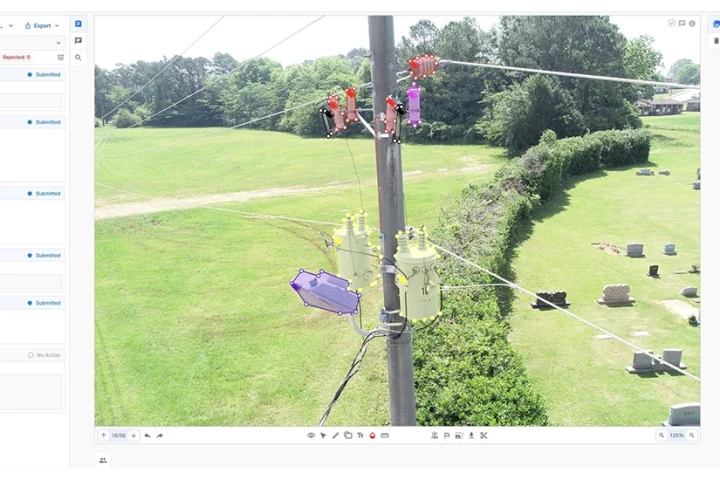Today’s intelligent buildings offer functionality far beyond traditional building management systems. An intelligent building supports energy savings and integrates services to drive economic, social and environmental benefits for owners, tenants, and staff populating buildings. Benefits range from improved productivity to enhanced comfort and safety. Sensors and devices make it possible to digitally represent physical objects, systems and spaces. Data collected by IoT devices enables optimised functionality of the building systems and spaces.
For example, many new smart PoE systems have built-in sensors that offer enhanced energy-saving possibilities. Occupancy sensors can help utilise space and flexible work places more efficiently. Smart lighting equipped with occupancy and ambient light sensors that change lighting over the course of the day help increase productivity.
An intelligent building’s nervous system is essentially the network that connects data input devices, which includes actuators, switches, system controls and so on, with the intelligent software that acts based on those inputs. Today, more and more systems run on, or are being adapted to, an Ethernet network rather than a proprietary system.
Intelligent building network design
Let’s take a closer look at current key developments in intelligent and connected buildings, and their requirements. A BIoT, essentially an IoT Installed in buildings, could, for example, encompass smart sensors, access control systems, or HVAC and metering systems. These systems and devices are all connected to a network.
The digital ceiling is essentially a moniker for a network of smart digital products and applications installed in the ceiling. Not only building systems, but also WLAN access points, IP cameras, smart building systems and connected lighting solutions with PoE-powered LED fixtures. Connecting highly efficient LED based lights with twisted pair cabling offers the benefit of providing lighting control signals and PoE to the fixtures and switches through the same cable, eliminating the need for a separate power cabling infrastructure.
Technology driver
The latest Power over Ethernet standard allows for power transmission over all four cable pairs. It offers up to 90W output power at the power sourcing equipment and 71.3W at the powered device. Furthermore, the latest standard supports 10GBase-T, making it possible to provide 10Gbps transmission speeds while supporting power delivery over copper. It’s also backwards-compatible with previous generations of PoE. This latest generation of PoE enables connected lighting solutions, as well as applications such as network powered digital signage in public areas and airports, and offers support for power-hungry IP cameras and the latest WLAN access points.
In fact Wi-Fi 6 technology is affecting the network cabling layout in today’s buildings. This generation of Wi-Fi offers greater user bandwidth and channel efficiency. However, increasing wireless network performance requires better signal quality, which leads to a decrease of radio cell size by some 30%. Care should be taken to ensure adequate cabling is available to support the higher access point density required. As bandwidth bottlenecks are shifted away from the wireless part of the networks, which can now handle gigabit speeds, the capability of the wired interface becomes critical. Category 6A copper is recommended as a minimum to provide adequate bandwidth and superior heat dissipation capabilities in cable bundles.
Impact on IT infrastructures
Today, data and power networks are converging. An increasing number of end devices are connected via copper cable to provide data as well as power. Previously, a work desk might use PoE-based power for no more than a VoIP phone. However, today’s digital ceiling devices and applications, often require much more bandwidth and/or power. Furthermore, the changing nature of applications using the network also means requirements in the area of IT security and reliability have changed.
To address cabling density and endpoint flexibility requirements, intelligent building cabling standards recommend using a passive zone cabling architecture. With this approach, Service Concentration Points, SCPs, can be created, each of which can support multiple service outlets in a coverage area of about 16 m2. Unlike the standard Enterprise LAN where the location of the work area outlets for Information Technology is usually predictable, these service outlets which connect the different building functions, or Operational Technology, may be positioned in many different parts of the space. Utilising a zone cabling architecture will result in a cabling density that is designed to support different systems and devices that can be optimally positioned according to the function they serve.
Fibre in the digital ceiling approach
An alternative network design for digital ceiling support is to install optical fibre and a small Ethernet switch providing power and connectivity as an active consolidation point in the building space being supported. From this active consolidation point, only a short distance needs to be bridged to the connected devices with patch cords and PoE power can be supplied. This approach can also provide for future connections as network designers often don’t know how many devices or systems will be connected in any given area of an Intelligent Building ahead of time.
Choosing the right cabling infrastructure
The key to selecting the right cabling infrastructure is to provide a flexible solution that can support the different bandwidth and power requirements of various services and devices in different locations. Installation of Category 6A cabling is considered a best practice because it supports the highest bandwidth and greatest power levels without the risk of overheating in large bundles, which are sometimes present in the zone cabling architecture.
The introduction of a digital ceiling active consolidation point can provide similar flexibility and the potential to reduce cabling costs. Installing optical fibre to a locally powered Ethernet switch located within the building space can meet bandwidth and power requirements for each device with the flexibility of connecting that device with a simple patch cord.
New Single Pair Ethernet, SPE, equipment will open the way for an additional overlay network designed to support intelligent building systems. Work on SPE cabling standards is underway with the expectation that this technology will enable economical, high density deployment of a whole new wave of connected sensors and controls that will make our buildings even smarter.
By Arafat Yousef, Managing Director, MEA, Nexans Data Network Solutions.
























